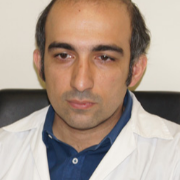1. Introduction
Drug-resistant Mycobacterium tuberculosis is a major public health problem and poses substantial obstacle to tuberculosis (TB) control. Multidrug-resistant (MDR) TB (resistant to at least isoniazid and rifampin) requires lengthy regimens of toxic drugs, which imposes high cost on the national TB program (NTP) with high mortality and morbidity (1). Extensively drug-resistant TB (XDR-TB), which is defined as TB caused by a MDR strain that is also resistant to any fluoroquinolone (FQ) and any of the second-line injectable drugs such as capreomycin, kanamycin, or amikacin, is also a new challenge in controlling TB (2, 3). By the end of 2012, 92 countries had reported the presence of at least one XDR-TB (1). Nevertheless, the most threatening issue is emerging of totally drug-resistant TB (TDR), which is defined as TB causes by a resistant strain to all available first- and second-line drugs (4). However, due to limitation of drug susceptibility test (DST) for second-line drugs, the practical definition for TDR is not available (5).
2. Epidemiology
The estimated global burden of MDR-TB in 2012 was 450000 including 300000 incidents; interestingly, about half of cases were from three countries, namely, China, India, and Russia Federation (1). Nearly 4% of all new cases and 20% of retreatment patients were MDR-TB (1). Moreover, only one-third of the estimated cases were reported (94000 cases) (1). The majority of this gap is due to lack of standard laboratory to diagnose MDR-TB (6). By the end of 2012, 92 countries had reported cases of XDR-TB with the average prevalence of 9.6% among cases with MDR-TB. This rate is higher in some countries (21% in Tajikistan and 12.8% in Azerbaijan) (1). Regarding TDR, there is no formal report and all exiting data are based on reports from tertiary centers (4).
In recent years, approximately 50 cases of MDR-TB are detected annually in Iran. About half of these patients are foreigners (from Afghanistan, Azerbaijan, and Iraq) but this incident seems to be underestimation of the current status; for example, 7% of new cases and 27% of retreatment cases in 2012 had DST (1). Based on observational data that showed high rate of MDR-TB among retreatment cases, rapid escalation of DST for all retreatment cases is expected (7). Due to lack of routine DST for second-line drugs in many provinces, there is no cumulative data regarding XDR-TB. We have only some reports from tertiary centers in Tehran (8, 9). For better estimation of XDR-TB prevalence, routine DST for second-line drugs (quinolones and injectable agents) must be performed.
Ineffective treatment of MDR-TB due to either poor efficacy of the medications or noncompliance with long-term and more toxic therapies has led to further resistance acquisition and the emergence of XDR-TB (10). Since the XDR-TB is resistant to first- and second-line drugs, the treatment options are seriously limited. Cases with XDR-TB might be virtually untreatable depending on the level of resistance to second-line drugs and the efficiency of the health system in each given setting (6). Furthermore, immunodeficiency (primary or secondary) contributes to high mortality in patients with drug-resistant TB (6, 11).
3. Diagnosis
Early diagnosis of XDR-TB is a very important issue in treatment. Using solid media for diagnosing XDR-TB, the DST result only became available three to four months after initiation of anti-TB medications (12). In recent years, advances in diagnostic test has been achieved (10). The result of resistance to isoniazid and rifampin will be ready in two to three days by employing rapid genotyping tests. Hence, clinician can design a suitable treatment regimen for MDR-TB. In addition, there are rapid tests for assessing resistance to the second-line drugs that lead to early diagnosis of XDR-TB (10). Nevertheless, even in supranational reference laboratories, DST for the second-line TB drugs other than quinolones and injectable agents are very poorly standardized (10, 12).
4. Treatment
Principles of treatment of MDR-TB and XDR-TB in Iran have been reviewed in other countries (13). In a retrospective study in Iran, successful outcome was 81.2% in patients with MDR-TB in comparison with 41.6% in patients with XDR-TB (9). The mortality rate for patients with XDR-TB is about 14% to 20%, which might reach to 98% in patients with HIV coinfection (14, 15). In another retrospective study, 15 patients with TDR-TB were reported. In that report, all the patients had failed to respond to standard second-line regimen and the results of their smear and culture remained positive after 18 months of treatment (4).
Based on these studies, it seems that TB is incurable in some cases; however, with designing the best available treatment regimen may be possible. Some new drugs had promising results (6). Linezolid is the most attractive one. In a systematic review of linezolid-containing regimen for XDR-TB, treatment success rate was 81.8% (16). In another randomized trial, early and delayed administrations of linezolid were associated with culture conversion in 70% and 35% of patients, respectively (17). Thioridazine, a neuroleptic drug, is also associated with interesting result in treatment of XDR-TB in an observational study, 15 out of 17 patients with XDR-TB had sputum conversion (18). Two new approved drugs now are on the desk: bedaquiline and delamanid. These are the first newly-released anti-TB drugs in more than 40 years (6). Other drugs with activity against XDR-TB strains are clofazimine (6), rifabutin (12), and meropenem-clavulanate (6). It seems that rational combination of these new drugs might improve treatment outcome of patients with XDR-TB and TDR-TB; however, randomized clinical trials are needed to confirm it (6, 10).
5. Discussion
XDR-TB and TDR-TB are real obstacles to controlling TB. Although treatment options are very limited, rational use of new drugs may be promising.
